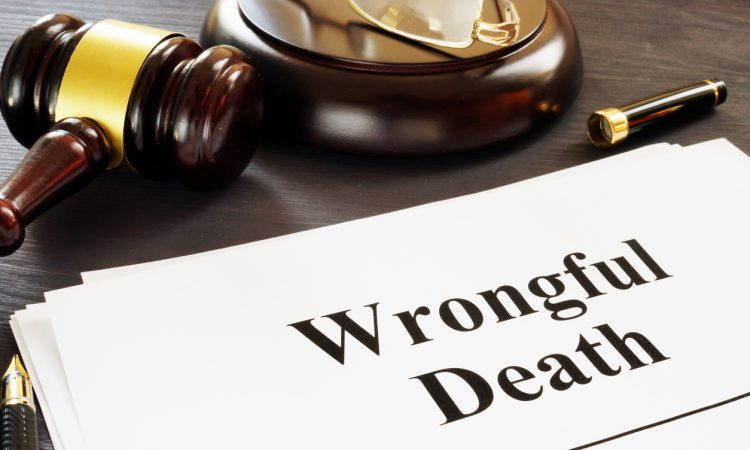
After a fatal loss, families in Bellevue want two things in equal measure: answers and accountability. Washington’s wrongful death and survival statutes provide a path to both, but the rules are technical and the timeline is unforgiving. This guide explains who is allowed to bring a claim, what kinds of damages may be recovered, and how the process moves through King County Superior Court. It also highlights recent patterns in outcomes informing Bellevue Wrongful Death cases in 2025. For families seeking clarity, or considering counsel, firms like Lehmbecker Law bring local experience with Washington law and the insurers who defend these cases.
Who can file a wrongful death claim under Washington law?
Washington law separates “who files” from “who benefits.” The personal representative (PR) of the estate files the wrongful death and survival actions, while specific statutory beneficiaries receive the recovery.
- Personal representative: A PR is appointed through the probate process in King County Superior Court. The PR can be a spouse, adult child, parent, or another trusted person named in a will: if there’s no will, the court appoints an appropriate representative. The PR is the one who actually files the lawsuit and manages it on behalf of the estate and beneficiaries.
- Statutory beneficiaries (RCW 4.20.010–.020): Primary beneficiaries are the decedent’s spouse or registered domestic partner and children (including stepchildren). If there are no primary beneficiaries, then parents and siblings may recover as secondary beneficiaries. Washington removed older restrictions that once limited these secondary claims, broadening access for families after 2019.
- Survival actions (RCW 4.20.046, 4.20.060): Plus to wrongful death, Washington recognizes survival claims that continue the decedent’s own cause of action. These allow the estate to recover the decedent’s pre-death damages (for example, medical bills and conscious pain and suffering) that “survive” the person’s passing.
- Death or injury of a child (RCW 4.24.010): Parents may have a direct claim for the death or injury of a child, including an adult child where the parent had significant involvement in the child’s life. This claim is separate from, and can exist alongside, the estate’s wrongful death/survival claims.
Deadlines matter. In most cases, the statute of limitations is three years from the date of death. Certain exceptions can extend or shorten that period (for example, claims involving government entities require formal pre-suit notice). Families often retain counsel early so the PR can be appointed, evidence preserved, and the filing deadline protected.
Damages recoverable for families after a wrongful death
Every case is different, but Washington law generally allows recovery of both economic and non-economic losses. In a Bellevue wrongful death case, the categories typically include:
Economic damages
- Funeral and burial expenses
- Final medical bills related to the fatal injury or illness
- Loss of the decedent’s expected earnings, benefits, and household services
- Loss of inheritance (in some cases), based on projected accumulation of assets
Non-economic damages
- Loss of the decedent’s love, companionship, care, guidance, and consortium (for spouses/partners and children)
- Parents’ loss of the parent–child relationship in child death cases
- The decedent’s own conscious pain and suffering before death, fear of impending death, and loss of enjoyment of life (through survival actions)
A few Washington-specific points often surprise families:
- No punitive damages: Washington generally does not allow punitive damages unless a statute expressly authorizes them. Wrongful death cases do not carry punitive damages.
- Broad recognition of intangible loss: Washington juries can award substantial non-economic damages for lost relationship and companionship, reflecting the real, human impact of the loss.
- Survival damages after 2019: Legislative changes clarified the estate’s ability to recover the decedent’s pre-death non-economic damages in many circumstances, ensuring that conscious suffering is not ignored simply because the injured person passed away.
Damages are proven with documentation and testimony: pay stubs and tax returns for earnings: expert economists for projections: medical records for cause of death and pain levels: and family, friends, and colleagues to explain the depth of the relationship that’s been taken away.
How the legal process unfolds in Bellevue courts
While no two cases move exactly the same, the path for a Bellevue wrongful death claim tends to follow this arc:
- Initial consultation and case evaluation
A family consults an attorney, often on contingency fee, to assess liability, damages, and deadlines. If retained, counsel manages communications with insurers so the family isn’t fielding calls while grieving.
- Appointing the personal representative
Counsel opens a probate matter in King County Superior Court and seeks appointment of a PR (sometimes with non-intervention powers to streamline administration). This step authorizes the PR to request records and prosecute claims.
- Investigation and evidence preservation
- Accident reconstruction: Scene inspections, photos, and black-box or telematics data in motor vehicle or trucking cases.
- Records: Police reports, 911 audio, WSP collision analyses, medical charts, and, in workplace deaths, L&I/OSHA findings.
- Spoliation letters: Formal notices to at-fault parties to preserve surveillance video, vehicle modules, maintenance logs, staffing schedules, or electronic medical records audit trails.
- Experts: Early consultation with specialists (reconstructionists, human factors, biomechanical engineers, physicians) to anchor liability and causation.
- Liability and insurance mapping
Attorneys identify all responsible parties and coverages: at-fault drivers and employers, property owners, product manufacturers, medical providers, or governmental entities. In government-related losses, Washington requires a pre-suit claim notice and a 60-day waiting period before filing (RCW 4.92.100 for state, RCW 4.96.020 for local entities).
- Pre-suit resolution efforts
With liability support and preliminary damages analysis in hand, counsel may submit a comprehensive demand package. Many cases resolve through negotiation or mediation before suit, especially when liability is clear and policy limits are known.
- Filing suit in King County Superior Court
If settlement isn’t reached, the PR files a complaint asserting wrongful death and survival claims. The case is assigned to a judge in King County and a civil case schedule is issued with deadlines for discovery, motions, and trial. Washington follows pure comparative fault: any percentage of fault assigned to the decedent reduces the verdict by that amount but does not bar recovery.
- Discovery and expert workup
Parties exchange documents, take depositions, and disclose expert opinions. Typical disputes include scope of electronic discovery, medical causation, and admissibility of corporate safety policies. Courts often require mediation before trial.
- Motions, mediation, and trial
- Motions may narrow issues (for example, excluding irrelevant prior incidents).
- Mediation is common in King County and can occur more than once as evidence firms up.
- Trial is to a jury unless the parties agree otherwise. Counsel presents liability, causation, and damages through lay witnesses and experts. Verdicts include line items for economic and non-economic losses.
Timeline
Straightforward cases sometimes resolve within 6–12 months: litigated matters often take 12–24 months or more, depending on the court’s schedule and the number of parties. Complex medical or product cases can take longer.
Throughout, a Bellevue wrongful death attorney’s local experience, familiarity with King County procedures, mediators, and defense counsel, can meaningfully affect speed and outcome. Firms like Lehmbecker Law routinely coordinate probate and litigation tracks to keep the case moving while minimizing administrative stress for the family.
Recent case examples shaping wrongful death claims in 2025
Recent Washington outcomes underscore recurring themes in how courts and insurers evaluate these claims:
- Trucking collision on I‑405 corridor: In a recent King County matter, electronic logging device data and dispatch texts were decisive in proving excessive hours and negligent supervision. The case illustrates how modern data, and prompt preservation, can move liability from “disputed” to “clear.”
- Delayed diagnosis in a hospital setting: A wrongful death claim stemming from a missed stroke highlighted the weight Washington juries place on timely escalation protocols. Detailed EMR audit trails and expert timeline analysis were critical to establishing causation, not just error.
- Assisted living fall with head trauma: A case involving understaffing and policy violations emphasized survival damages for the decedent’s conscious pain and suffering before death, along with non-economic losses to the spouse.
These examples, drawn from recent Washington trial reports and public filings, show a consistent pattern: early evidence control, solid expert work, and credible damages storytelling tend to drive stronger results for families.




